Praxis
Undoing nostalgia: A conversation on David Kelley’s antidotes to realism and modernity in Brazil
post(s)
Universidad San Francisco de Quito, Ecuador
ISSN: 1390-9797
ISSN-e: 2631-2670
Periodicity: Anual
vol. 3, 2017
Received: 25 April 2017
Accepted: 25 May 2017

This work is licensed under Creative Commons Attribution-NonCommercial-ShareAlike 4.0 International.
Cómo citar: Kelley, D., Schilaro, T. (2017). Undoing nostalgia: A conversation on David Kelley’s antidotes to realism and modernity in Brazil. En post(s), volumen 3 (pp. 174-187). Quito: USFQ PRESS.
Undoing nostalgia: A conversation on David Kelley’s antidotes to realism and modernity in Brazil
Tatiane Schilaro Santa Rosa: The first (and the last) time we met I had just started to study the Belo Monte dam in the Amazon, tracing its history back to the military dictatorship in Brazil. We sat in the back of probably the tiniest coffee shop in the Lower East Side in New York, and I remember I was very impressed after seeing Sieve (Pharmakon) 2010, because of the several moments in which the indigenous body appears in the video, either performing according to a script, or vanishing amidst tropical plants being placed on a stage set on a noisy street in Manaus.
Those references to the performativity of the indigenous body made me think about the depictions of indigeneity in Brazilian art history of the 19th century, in which indigenous characters from Romanticism often appear vulnerable, sick, or dead. I think I looked for those images on my phone to show you: the horizontal bodies in Rodolfo Amoedo's The Last Tamoyo (1883) and Moema (1866) by Victor Meirelles. If we start to look at the legacies of modernism--as a continuation of the colonial mindset-- it seems that the indigenous body becomes almost a mandatory vessel one has to "go through" to tell that story. But in Sieve (Pharmakon) you break with that tradition of depiction, especially because you record the act of directing, you let us see who is directing, you let us look at the apparatus of direction and its hierarchies, through constantly reminding us of the act of filming and documenting. Does that make any sense?
David Kelley: It does. In some ways the title Sieve (Pharmakon), which I borrow from Derrida, is a key to my filming strategy. Derrida writes about a Greek king given the technology of writing. The king’s reaction is to call it pharmakon, something that is both a cure and a poison, because while writing records memory, it simultaneously increases forgetfulness. The scenes with indigenous actors in Manaus are shot in the Theatro Amazonas and on the street of a new public housing development, Prosamin. In all scenes I shoot with a second camera the interaction of the film crew with the actors. In one scene they are rehearsing for a short film called Cachoeira by Sergio Andrade, about a group suicide on an indigenous reservation. I film them practicing trust falls while rehearsing their lines and discussing their experience of playing indigenous teens in a fictional movie. In the street scene we had the film crew shooting a music video of them as set stylists slowly adding more tropical plants to the set until the camera’s perspective is entirely obscured. In both cases I wanted to foreground the process of representation and its artificiality.
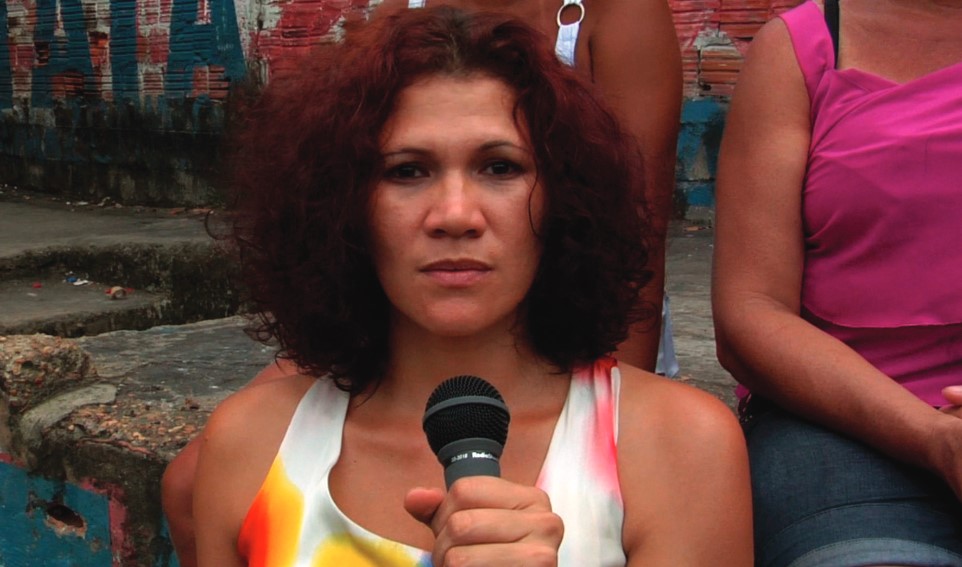
Sieve (Pharmakon)
Kelley, D. (2010)
Your idea of the indigenous body being a vessel that we must pass through to tell the story relates to what I was thinking about the performativity of documentary or ethnographic subjects being the burden of realism. Conventionally we think of photography or video as a vessel or medium through which reality passes, but your idea of the indigenous body also being a vessel collapses the distance between the subject and the medium, making them interdependent. This reminds me what you were telling me about your writing on Lygia Clark’s therapeutic performance techniques of the late 60’s. I had the feeling that you were considering this late sensorial, anti-form, resonant bodywork as an antidote to the times – the failure of the May 68 revolution in Paris, the oppressive military dictatorship in Brazil, and the rise of the neo-capitalism. I asked you if you thought Clark was assuming a shamanic role as the conductor of these sensual treatments, and if this could relate to sixties´ imaginaries of a new corporeality that didn’t nature from culture, inside from outside? Is it too far-fetched to relate this to representations on the indigenous body?
TSR: Yes, I think Lygia Clark was aware of her work’s role as a kind of “lightning rod” through which anyone could experience sensorial awareness of their, his, or her own body. That was Clark’s sensorial phase –or what she called the Nostalgia of the body– with her propositions at the Sorbonne, such as Anthropophagic Slobber. Those were exercises in which Clark wanted to provide her students with a consciousness of the body as nature, not as a shell that is alien to oneself, such as modernity had depicted it. As you said, we could imagine that in those practices there was no clear distinction between nature and culture, which is very interesting if we consider that Clark was coming from Neoconcretism, a movement that still gets fed from European geometric abstraction trends –such as Russian Constructivism and Gestalt theory– even if it also defies them.
But later on, with the structuring of the self –an individual therapeutic practice Clark began in Rio, in 1976, still during the military dictatorship– it was the prostate –not active– body that was experiencing memory and mental images by touching and sensorially relating to specific objects, which Clark called relational objects. I think, and that’s one of the ideas I have been pursuing in my research, that the ways in which her clients experienced corporeality, specifically in her later practice, speak to Amerindian healing processes, at least in a broad or instinctive sense. I don’t think Clark’s corporeal experiences emulate shamanism per se, but they could have: what is also interesting in this body of work, for me, is the conflation of psychoanalysis and bodily healing. It seems Clark was extremely reticent to being called or categorized as a “shaman,” for obvious and less obvious reasons, but I do think her work somehow dialogues with the experience of “being/becoming indigenous.”
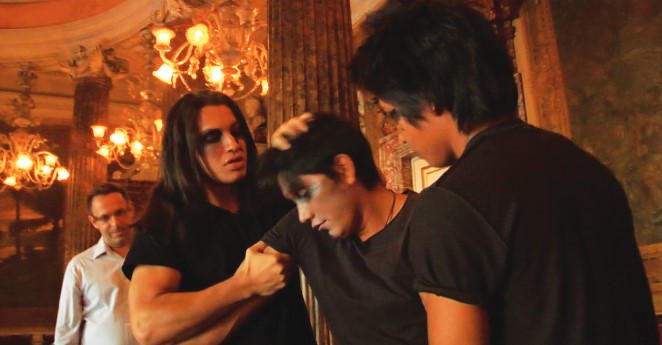
Sieve (Pharmakon)
Kelley, D. (2010)
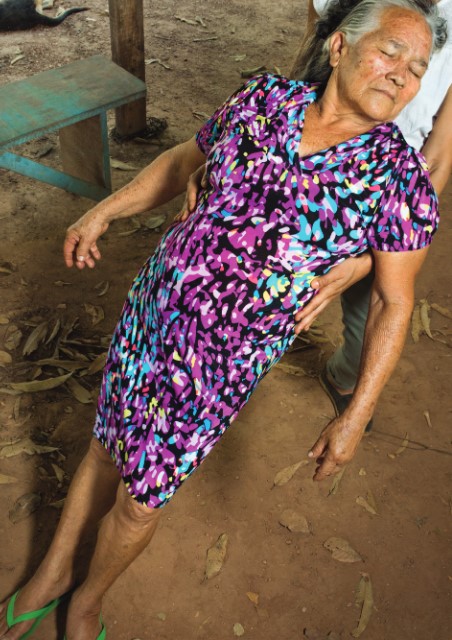
Sieve (Pharmakon)
Kelley, D. (2010)
But here, we could return to the representation of the indigenous body. What does it even mean to be indigenous these days? Perhaps, among other vicissitudes, being indigenous can be a form of resistance against the legacies of colonialism/modernity. I find the notion of Pharmakon that you borrowed from Derrida great, which is both poison and antidote because it also enacts how the indigenous body has been misappropriated and depicted in dominant discourses during and after colonial times: as either savage or noble, pure or spoiled.
Even nowadays that is one of the dilemmas of representing the indigenous body: indigenous people must achieve visibility (especially in Brazil and throughout Latin America, but also in the U.S.), but what are the possible antidotes –as mode of representations– for poisonous, essentializing depictions? How to even escape the history of ethnography? One possible route is to refuse realism and representation, which artists such as Jimmie Durham and Maria Thereza Alves have done. I think Sieve (Pharmakon) shatters the veil of ethnography, or of social documentary, by exposing, as I said before, its apparatuses of representation. And that doesn’t only happen in regards to the indigenous body in the work, but also to the female subject, which I find intriguing.
I’d love to talk about the scenes in which a woman narrates excerpts from the book Vita: Life in a Zone of Social Abandonment. Similarly to when you film indigenous actors and Sergio Andrade rehearsing for a short film, you also film a female performer, reading what I believe are Catarina’s lines from that book, is that so? How do you understand this informal relationship developed in the work, between white, but somehow oppressed, women and indigenous men, and in the context of Brazilian realism or romanticism? Suicide as a theme in Andrade’s short film, which is a real issue in indigenous communities in Brazil, also becomes part of your project, and then resonates with Catarina’s experience. Could you also talk more about your thoughts on the “ethnographic subject bearing the burden of realism”?
DK: Yes, I also included a poor white female lead character in Sieve (Pharmakon), as Sphinx-like narrator. The actual Catarina is the subject of Joao Biehl’s ethnography, Vita: Life in the Zone of Social Abandonment, which considers the phenomena of private mental institutions in Brazil. These replaced public facilities for the mentally ill, after the development of psychiatric pharmaceuticals that could deal chemically with bipolarity, schizophrenia, and other mental conditions. The mentally ill could be treated by psychiatrists and remain at home, or in extreme cases of poverty or abandonment they could be sent bare to private clinics, with only their identity cards. What Biehl discovered was that these private facilities represented places for the country’s unwanted, socially abandoned, and mentally ill to disappear. In some cases, there is little or no oversight of the conditions of these facilities, nor of the treatment for their residents.
I saw correlation between the treatment of the impoverished and unwanted and the indigenous subject. In trying to theorize the condition of the poor and unwanted in Brazil, Biehl uses another definition of Pharmakon, which in ancient Greek societies was the banished subject in the community that would be sacrificed by being cast out of the city walls in an effort to appease the gods and save the community. The indigenous subject in Brazil has been treated in a similar way to the mentally ill, as child or a ward of the state, and best kept out of sight. This is certainly a dichotomy and dilemma of the public image of the indigenous person, to be either unwanted or out of place, or to be an essentialized ethnic representation of the natural heritage of the nation.
I created a poor white woman for the project to speak lines from Catarina’s book in the film. Catarina had written in her journal a hybrid of poetry, auto-ethnography, experiences of living in Vita (her mental clinic), and her prescient reflections on the plight of being an impoverished subject in a neoliberal Brazil. I saw, in her words, an interrogation of the phallic father, which I interpreted as the State, or the state of living under neo-liberalism.
Don’t you think that the hyperbolic depiction of the favela in popular culture and international imaginaries of Brazil, coming from Black Orpheus, Oiticica’s Parangolés, and recent blockbuster movies like City of God (Cidade de Deus) represent poverty and abandonment in a similar way early Brazilian Romanticism or Realism did? What I mean by the burden of realism relates to this, that one’s social status, as registered through their representation, is a kind of natural resource or commodity that can be sold. If this is true in popular media and fiction, is it also true in science and ethnography –that the subject (native informant) is performing for the scientist or documentarian. Or, that the scientist or anthropologist constructs the apparatus from the ideological bias of his subject position?
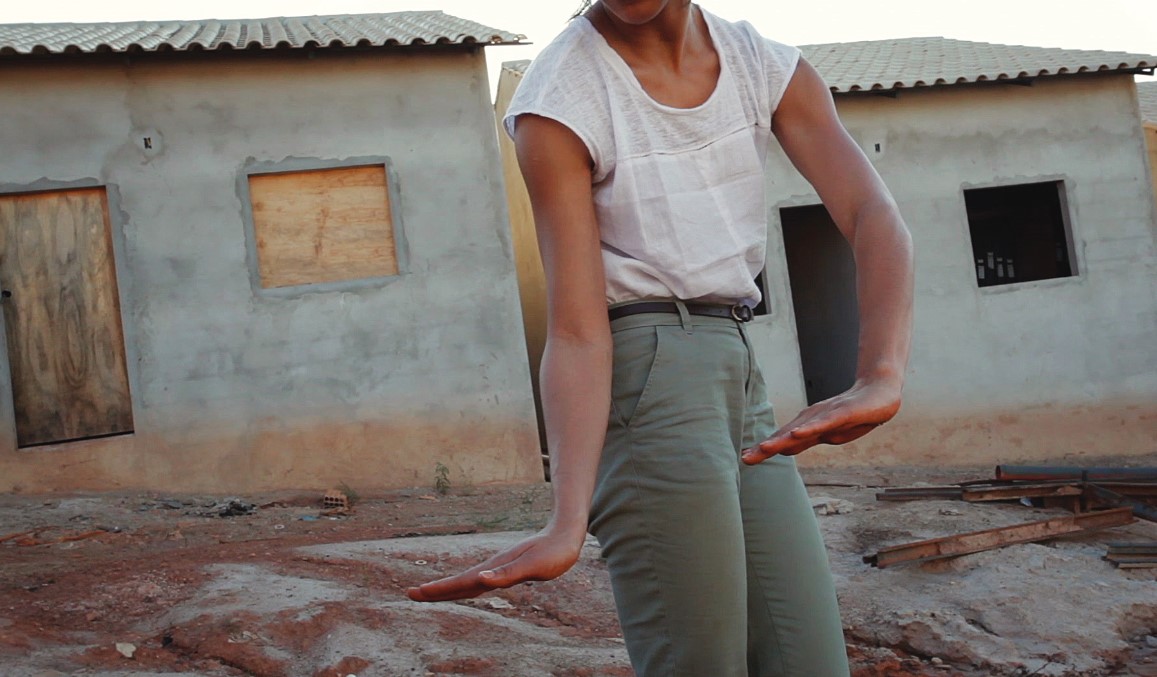
Sieve (Pharmakon)
Kelley, D. (2010)
TSR: Definitely. I think that depictions of poverty in Brazil –produced by Brazilian artists or filmmakers– especially those to be consumed by an international audience have constantly been nourished by Romanticism and Realism. City of God (2002) borrows from history, explicitly or implicitly; the roughness depicted in the scenes makes us believe this is real life, even if characters navigate between fiction and facts. There’s such a long history of realism in visual culture in Brazil, and you’re definitely right, that still persists today. I think in contemporary film it started with Cinema Novo (around the 1960s), and filmmakers such as Glauber Rocha. Another film, Central do Brasil (Central Station, 1998) complicates this loaded history of depicting social inequity in Brazil, mainly due to the construction of the characters, Dora and Josué. I’m not sure about Oiticica’s Parangolés; I think his project was a bit more complex, especially if we look at his writings. For Oiticica, it was about empowering the unwanted by borrowing elements from their own ways of existing in the world, that is why he presents the body in motion: the movements and embodiment stemming from the experience of samba in favelas.
Importar imagen
But, yes, in general we need to think more deeply about race in relation to works produced right after Neo-Concretism in Brazil, such as Parangolés: how is race presented there? I’m not sure if there’s enough of a discussion on that, either in Brazil or abroad. Often, when a racial or an ethnic subject appears in artworks made by mainstream white Brazilian artists, during the 1960s throughout the 1980s, these subjects were still being depicted figuratively, or realistically, in the sense that they were placed within normalized social positions; not very often dodging or dismantling a condition of social inequity. In my research, I’m trying to understand this figurative impulse during the dictatorship.
It is even more peculiar that the “indigenous” as a theme has come to the forefront again just this year: a year that also marks a public exacerbation of conservatism in Brazil. We had protesters (few, but dangerously loud) taking the streets in favor of a return of the dictatorship. And to oppose that, we have, again, a time when the image of the indigenous rises, as a remainder of the atrocities committed against minorities in Brazil. But, as has occurred before in history, indigenous peoples are “invited” to participate and come to occupy often similar places: this year, the struggles of the indigenous peoples from Xingu, was the theme for Imperatriz Leopoldinense’s desfile, one of the most famous Carnival samba schools in Rio de Janeiro. While Oiticica’s Parangolé envelopes the raced body to integrate art, the public space, and samba, raced bodies, the unwanted, and the indigenous subject are only allowed to come to the forefront in those “topsy-turvy” episodes, such as Carnival, when an exception is made and they are able to address the entire society. But what happens after those moments?

Sieve (Pharmakon)
Kelley, D. (2010)
I think your work enacts exactly the problem of representation: the core of Sieve (Pharmakon) is the “(in)convenience” of visibility and of the ways in which artists or intellectuals try to provide “a voice” to those who are oppressed, unwanted, kept away from society. I’m also curious about the moments in which performers look directly at the camera and pause for a few seconds to then resume a narration or a movement. Those pauses elicit a forced awkwardness, but they also entail latency: as if there was a surplus of action, or as if from those pauses a movement was about to violently burst. And then there are those artificial moments in which movement really erupts, such as when indigenous actors rehearse dancing to an unheard heavy metal song, loosely jumping on the stage; or earlier, when you film two of them rehearsing the forcing of alcohol into one actor’s mouth. I feel the same latency in the some of the moments of your new project, on Transamazonica.
DK: I feel that the long take, as well as the tableaux vivant disrupt the temporal expectations of the viewer, and in that fracture and slowness, there is latency and, I think, the image becomes a mirror reflecting the gaze of the viewer, and acknowledging her agency, self-consciousness, and perhaps boredom. Selective redaction and erasure contribute to this latency when, for example, I have the indigenous actors slam dancing to absent heavy metal music on the stage of the Theatro Amazonas, or when they hold their pose for a long time on the street, as the set stylists surround them with tropical plants.
Perhaps this could bring us back to the question you raised; is the indigenous body a vessel that we must to pass through? Is the essentialized, phantasmatic image of the indigenous body like a commercial narrative film? Are they both hollow vessels that contain collective representation fantasy? You need an antidote to this kind of iconography. My impulse it start taking things away – a light, a background, the orchestral score, etc. Then the film becomes more of a ‘documentary,’ and less of the transparent magic of Hollywood, you begin to see its constituent agents intra-acting or failing to do so. You see their constructedness. Then I begin to collage different contents or agents together and allow them to interact and diffract through one another.
I feel that in our moment of total media saturation it is more difficult to find tactics to short circuit the regimes of representation that are instantly naturalized. I can think of an essay you wrote about the legacies of the military dictatorship in Brazil, in which you describe a performance by the indigenous activist Ailton Krenak, when he appeared before Brazil’s Congress in 1988 in a white suit and painted his face in the dark black pigment of genipapo (traditionally used in indigenous rituals of mourning) while reading a statement about the reality in which indigenous people are living each day– relentless campaigns to defame them and characterize them as a risk to the economic development of the nation. His fragmented action is a collage of signifiers – Krenak’s compositional performance in the National Congress dressed in the current fashion mode (white western suit), performed an indigenous mourning ritual (indigenous signifier), while he recited an eloquent statement on the precarity and risk under which the indigenous populations live daily (intellectual activist).
The performative collage of disparate identities reminds me of Karen Barad quoting her friend Vicky Kirby, in Barad’s book Meeting the Universe Halfway, quantum physics and the entanglement of matter and meaning, where Kirby says, “I am trying to complicate the locatability of human identity as a here and now, an enclosed and finished product, a causal force upon Nature. Or even… as something within Nature. I don’t want the human to be in Nature, as if Nature is a container. Identity is inherently unstable, differentiated, dispersed, and yet strangely coherent. If I say ‘this is Nature itself,’ an expression that usually denotes a prescriptive essentialism and that’s why we avoid it, I’ve actually animated this ‘itself’ and even suggested that ‘thinking’ isn’t the other of nature. Nature performs itself differently.” In post-humanist terms how can we get beyond the nature - culture dichotomy that is so wrought and perpetuates legacies of violence and environmental destruction?
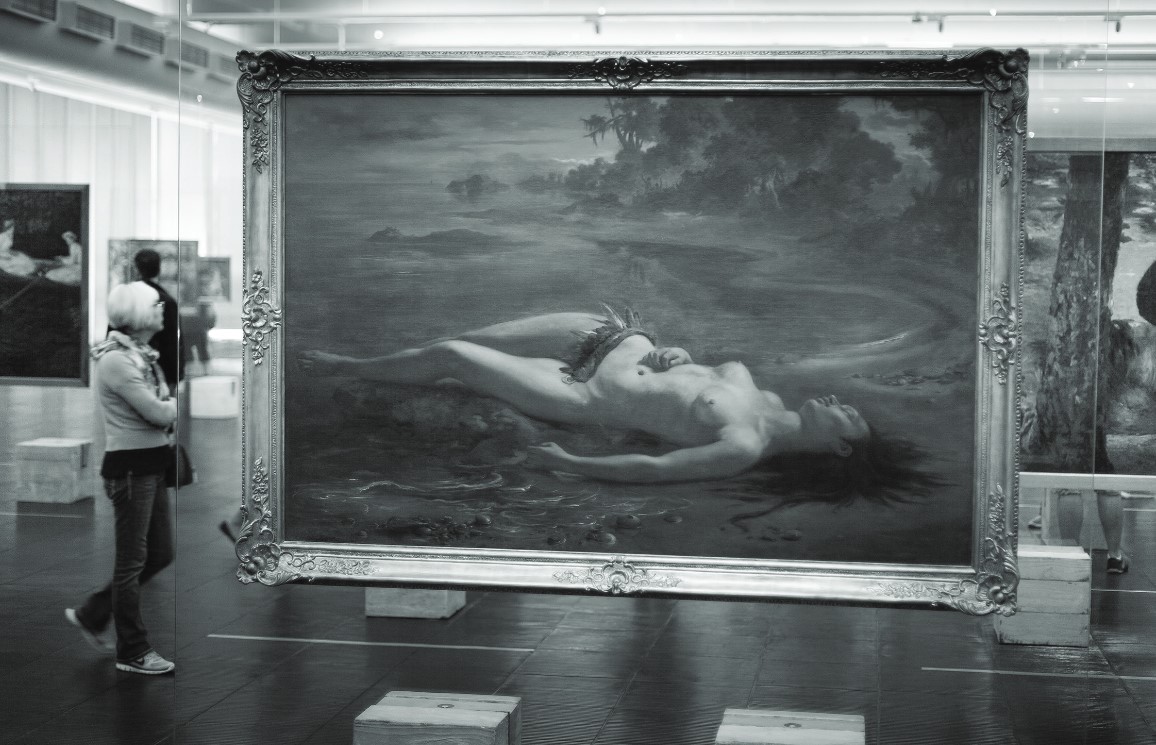
Sieve (Pharmakon)
Kelley, D.(2010)
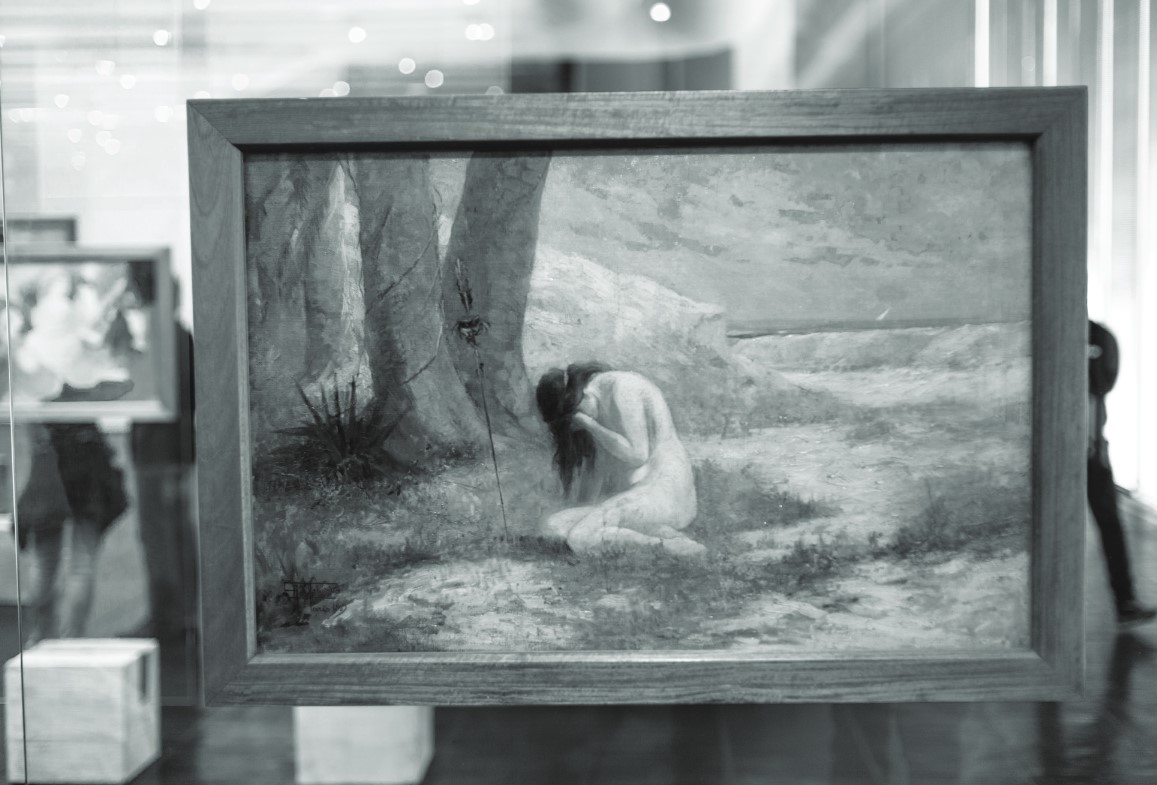
Sieve (Pharmakon)
Kelley, D. (2010)
I remember that when I was telling you about my recent project about the Transamazonia highway you said it reminded you of the Wall in the U.S., “a never-ending enterprise,” and “a similar will to construct, as if to stanch anxiety.” I think you are right; both act as phallic signifiers, which are endless fantasies about total control. With my project Transamazonia (Social Architecture), I wanted to introduce a ritual on a very human scale that could be repeated over a great distance, the 3000 kilometers from Brasilia to Belem. I collaborated with Sao Paulo dancer Mariza Virgolino to develop a small score that she could perform or teach to other people. Our short 2-minute dance that borrows phrases from Maya Deren’s ethnographic voodou film from Haiti, Divine Horsemen, from Steve Paxton’s spiraling improvisations, and Virgolino’s amazing choreography. The effect is a kind of marking of time and place through gesture. The other movements we worked with were falling or swooning, which is a gesture of the release of control and a movement from vertical to horizontal positionality. As we drove north from Brasilia, Mariza would perform or we would enlist local non-dancers on the way to dance. I want the reiteration of these movements to be a constant and stitch the film and the landscape together in a human and meditative scale.
TSR: When the two boys are performing similar gestures to Mariza’s score, in your work Transamazonica, I felt they were making connections between their own bodies and the architecture that surrounded them. The same feeling I had when seeing other non-dancers performing, or practicing controlled falling. The human scale established between the architecture and the delicate movements actors performed felt as a metaphor for interrupting the inflexibility that stems from the project of modernization, of progress, and development. As you said, these movements destabilize the phallic figure of the nation-state in Brazil and its desire to capitalize on nature and the landscape, and on the human body as workforce to fuel desenvolvimento. This is so important to disclose and debate: it is not only a legacy but also a mindset still very much installed in Brazil; the necessity to reach economic development is a pervasive topic in the small talk of the middle class. And I don’t think even some segments of the left in Brazil realize how dirty the money deployed in projects to “modernize the nation” is, otherwise there would have been a fiercer opposition to horrendous endeavors such as the Belo Monte Dam that is a direct legacy of the military dictatorship.
Yes, I still think that the Transamazonica, in its megalomaniac proportions, became a sort of wall, void, seizure: it became an artery that defied the very connective nature of what a road should be, as manifested in the landscape. The Transamazonica brought destruction with the excuse of being a connection between remote Brazilian territories and then, as its construction failed, some of its segments became ghostlike. But because it was meant to “connect” places, it is perhaps harder for us to see it as a barrier: its destructive (psychological and physical) effects are related to physical unmaking rather than constructing, like the famous “Wall-impulses” of our times.
A final (and perhaps less) interesting remark: I love the light that you capture at the bus station in Brasilia. It reminds me of sunsets I’ve seen in Brazil, in rural settings; it’s a kind of hangover light, after a hot summer day. I think of those sweaty, sticky days as natural obstacles to modernization: days that slow everything down. And here I end with a stereotypical, romanticizing narration of landscape: it perhaps suggests that it is hard to escape nostalgia, as a by-product of modernity in Brazil. post(s)
Additional information
Cómo citar: Kelley, D., Schilaro, T. (2017). Undoing nostalgia: A conversation on David Kelley’s antidotes to realism and modernity in Brazil. En post(s), volumen 3 (pp. 174-187). Quito: USFQ PRESS.

